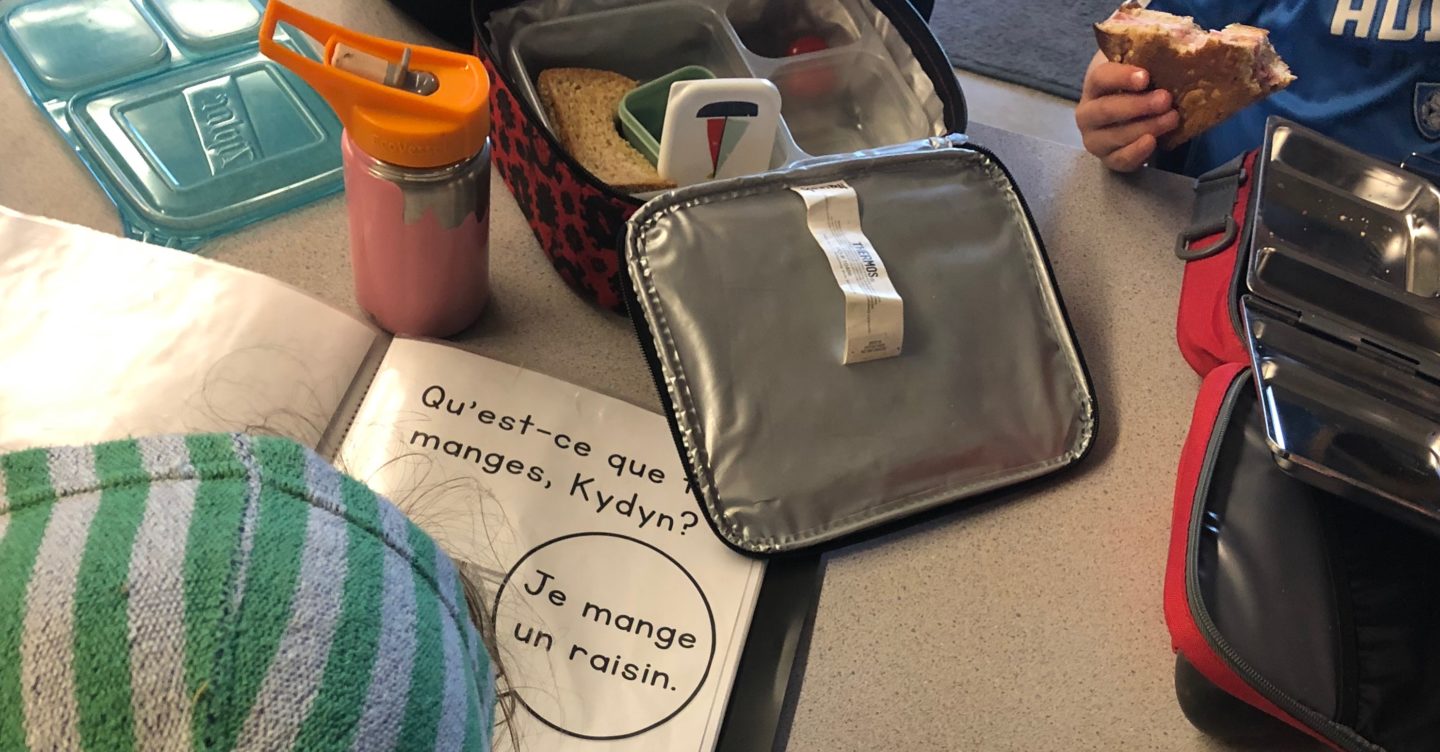
Snack and Chat
Transitioning snack towards the target language is an important step towards creating a French-full classroom. The sheer quantity of new vocabulary can sometimes make this feel like an impossible task. Shifting the focus from vocabulary to verbs is key. Learners need to be able to say:
- J’aime
- Je mange
- Qu’est ce que tu manges?
- Est-ce que tu aimes?
- Ça
- Moi aussi!
The beauty of this approach is that kids don’t need to be able to name every piece of food in order to communicate. They will naturally use the word « ça » whenever they don’t know what something is called, and since they can hold the item up in the air, I don’t need to be close by in order for my learners to maintain their conversations in the target language.
To support this learning, I like to make a simple class book which features a photo of each child eating. I ask each child « Qu’est-ce que tu manges, ____? » and I support them to answer, « Je mange ______. » Each page in the book features the question at the top, the photo of the child eating, and the child’s answer in a talking bubble (I use pages to create my document, but it would likely be possible to create this on various word processors or apps). It is worth noting that in this instance I do support the translation of the child’s response. This is not an instance where I am attempting to record the child’s current language abilities or free thought. My intent with this activity is to co-create a book which will also be an instructional tool.
Once the book is ready, I print it, and then put it in a document portfolio (these are available at dollar stores and office supply stores). I read the book as a read-aloud before snack time. Then I circulate and ask the question repeatedly to multiple children. I follow my question with « Est-ce que tu aimes manger ____ ? » For my strongest learners, I will use the food word again (they already have mastery of the verbs I am focusing on). For learners who don’t yet have mastery with the verbs, I will ask « Est-ce que tu aimes ça? » as my follow up question. This way, I am adjusting the oral language expectations based on the language expertise of my learners in that moment, while also modelling a strategy leaners can use to maintain these conversations without all of the specific vocabulary.
Since I am encouraging the learners to speak in French with a ligne magique (more on this here), they will begin to use this language on their own by copying my questions with one another. Additionally, they will become interested in comparing to see if they have the same thing to eat as their friends (they often do). This is where the « moi aussi » phrase comes in very handy. Many learners will naturally start to count their items to see if they have the same number of strawberries, or mandarin oranges.
I re-read the story every day before snack time for at least a week just after it is first introduced. My learners will naturally try to read along with me as I read aloud (I will encourage this). I add to book to our classroom library and make it available during reading times. The photo pictured above was taken one day during snack time, months after we first created the story. One of my learners had pulled the book out to read while their friends were finishing up their lunches during our afternoon snack time. The interest in the story peaked as my learners were beginning to use the phrase « Comment est-ce que je dis ____ en français? » (to translate unknown words) with greater confidence.
This teaching is grounded in research about the importance of repetition for language learners.
Snack time is a daily activity which provides a wonderful opportunity for practicing turn-taking in conversations, expressing likes and dislikes, and asking and answering simple questions.
